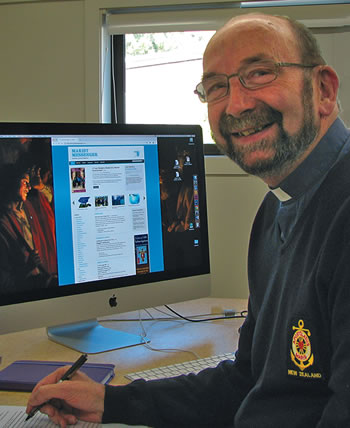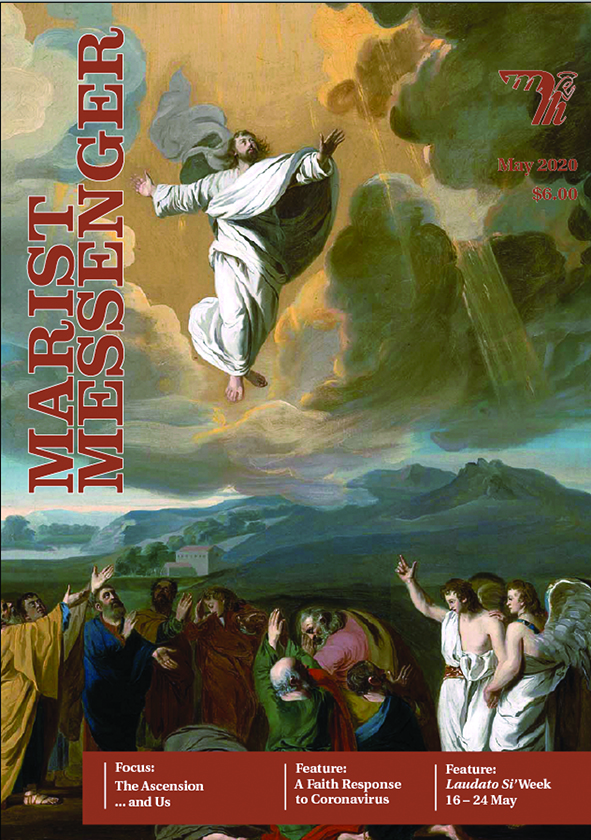The Ascension … (A full copy of the May Marist Messenger is available for download here).
Click the cover for a full copy of the May Marist Messenger.

In his Gospel and in the Acts of the Apostles, Luke writes about Our Lord’s Ascension into heaven. St Luke tells us that he did not witness first-hand the events about which he wrote. He had asked questions of those who had known Our Lord before his Ascension. His understanding of what Our Lord said and did changed as he came to appreciate more fully what his informants told him.
In his Gospel, Luke wrote, “Now, as he blessed them, he withdrew from them and was carried up to heaven” (24:51). In the Acts of the Apostles 1:9, he wrote that “Jesus was lifted up while they looked on, and a cloud took him from their sight”.
Clouds in the Bible are not just about the weather. When the people of Israel left Egypt, they were accompanied by God in a pillar of cloud by day (Exodus 13:21). When Moses ascended Mount Sinai to meet God, God came down to earth in a cloud, and later on, God was present in a cloud in the tent of meeting. When the new temple in Jerusalem was dedicated, “a cloud filled the house of the Lord … the glory of the Lord filled the house of God” (2 Chronicles 5:13-14). The cloud symbolised that the Lord God was present.
The end of Christ’s ministry on earth – “when a cloud took him from their sight” – is thus linked to the long history of God’s dealings with his people. The Ascension cloud brings to mind the cloud that enveloped the Mount of the Transfiguration, out of which the Father’s voice was heard: “This is my Son, the Chosen One” (Luke 9:35). The cloud also pre-figures Christ’s coming at the end of time. Luke quotes Jesus when he speaks of the sufferings to come, comforting his friends by telling them that they will witness “the Son of Man coming in a cloud with power and great glory” (Luke 21:27). The cloud will mark the end of time.
… and Us
Sixty years or so ago when I was a parish altar server, the Ascension of the Lord was celebrated on a Thursday, forty days after Easter. There was a solemn moment after the Gospel reading when the flame of the Easter candle was extinguished. I think the putting out of the candle symbolised that Jesus had left the earth. Nowadays it might seem a bit strange to put the candle out – the Lord’s Ascension does not mean that Jesus is no longer with us. Instead, it signifies that time and space no longer hold or limit him, which means that he can be present to us at every moment of our lives.
The Lord is with us, always. He empowers us to work with him for the good of his people, which is how we live his command to “make disciples of all the nations” (Matthew 28:19).
In the time between Easter and the Ascension, the Gospels do not record any miracles except for Our Lord’s sudden appearances here, there and everywhere. He spoke to his friends about what they would do, and about sending the Holy Spirit upon them. It’s as though he were saying to them, “It’s over to you now. You are to continue the work that I began”. It was a bit like passing on the baton in a relay race. Jesus gives the baton to his disciples for them – and us – to complete his work.
We are to speak his words of love and to be his presence and his love wherever we are. And he is always with us, working in us, his people.

 Entries(RSS)
Entries(RSS)